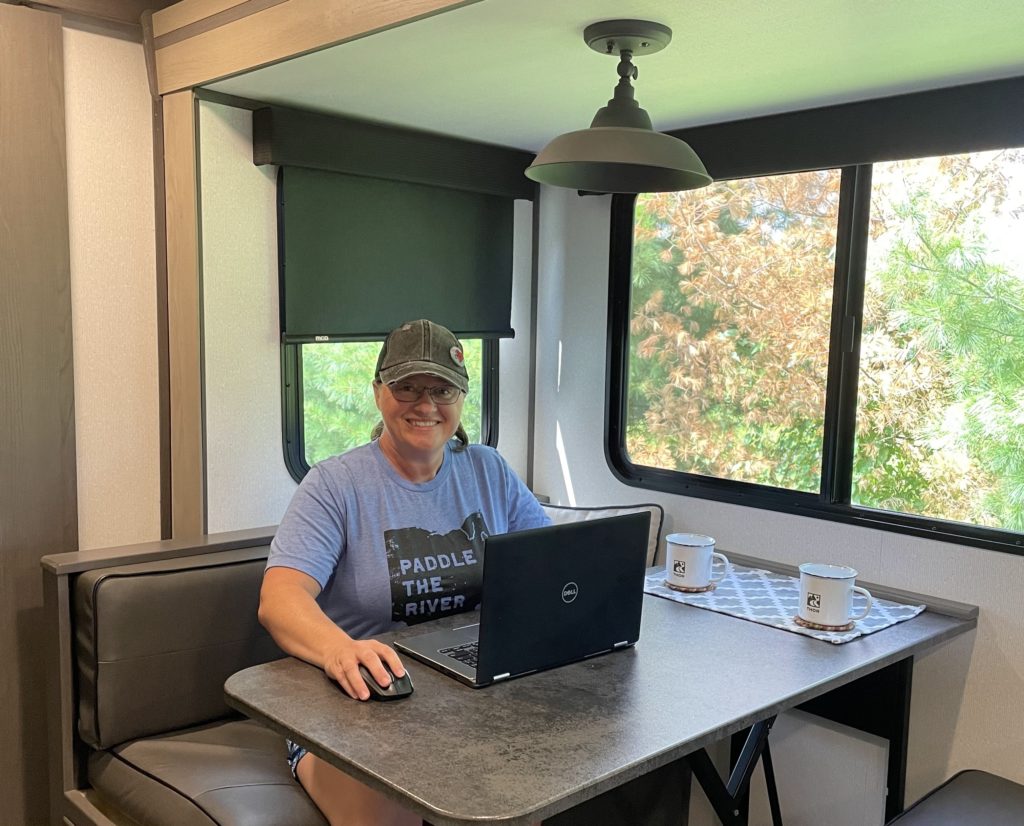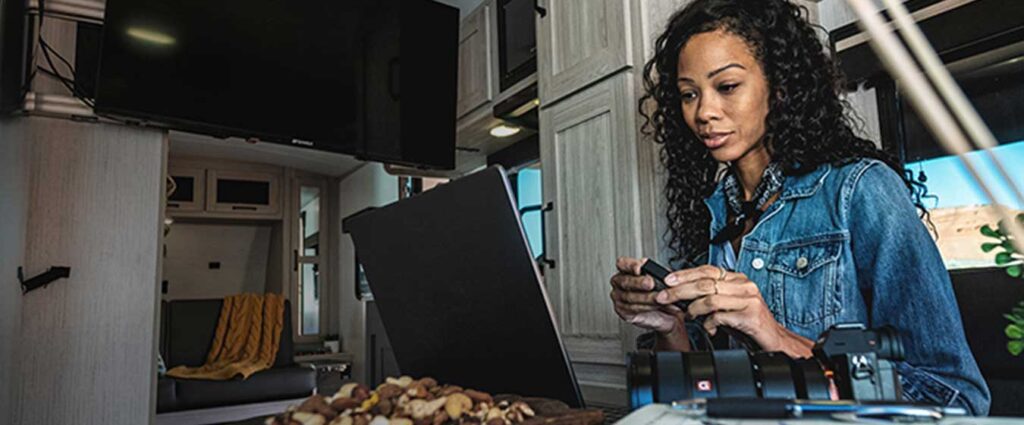I love the RV lifestyle and getting out into nature is one of my favorite things to do. The feeling of being away from the rat race and busyness of life is a welcome reprieve. However, for the everyday traveler, and as a travel writer myself, having reliable Wi-Fi connectivity while traveling anywhere is difficult to do.

If the need for Wi-Fi is hindering that extended RV trip, no need to worry. Wi-Fi is closer than you think, so start getting your rig ready for that cross-country road trip you have been putting off.
Types of Wi-Fi Connection
What is the best Wi-Fi option? That is a loaded question because the answer is whichever one works for where you will be. Even as I make these comparisons about RV internist solutions today, by tomorrow there will probably be a new plan or router that changes the trajectory of your wants or needs.
Public Wifi Spots
The cheapest and easiest way to stay connected while traveling is through public Wi-Fi networks. These are peppered throughout the US., and public Wi-Fi can usually be found in coffee shops, campgrounds, libraries, and fast-food joints.
Wi-Fi has the potential to be super-fast but shared public networks can be very slow. These public networks work based on how many people are sharing that connection. Often, these shared connections are usually disappointing and weak when you need them the most.
As a travel writer, I have learned not to depend on someone else’s internet to suit my needs. We have parked our rig behind the main store in a campground, 20 feet from the internet source, and it could not reach our RV. People were looking at me funny as I worked as fast as I could sitting on the ground outside the campground general store, but a girls got to do what a girls got to do.
Pro-tip: I usually do not depend on campground Wi-Fi connectivity being fully functional.
Cell Phone Hot Spot
There are four major cell phone companies in the US. Each one has its pros and cons, so you will need to do your research before signing on the dotted line for service.
Verizon: Has the most nationwide LTE/5G coverage and is a top pick for RVers. Verizon can be congested with users; you will note this in how fast your Wi-Fi works.
AT&T: LTE Coverage is like Verizon and seems to be less congested with users. I read their 5G long range works well, and some users even have said it is better than Verizon.
T-Mobile: The third largest carrier, has spotty coverage, and many people I spoke with have ditched this service for Wi-Fi and used one of the larger carriers. However, T-Mobile is working on getting their service “out there,” but it is not quite what RVers need while traveling.
Dish: New to the scene and not quite ready for RVers who are traveling across the country. You will roam onto other towers, and those towers give their customers service first, and you would be pushed down.
Wi-Fi Boosters
What is a Wi-Fi Booster?
What is a Wi-Fi booster, and why would it benefit an RV traveler? An RV Wi-Fi booster is any device that will pick up a Wi-Fi signal and make it stronger.
More familiar, are Wi-Fi extenders for homes. For instance, if you live in a large house and some rooms don’t have great internet, you can use a Wi-Fi extender to get faster internet in that room.
This is the concept with RV Wi-Fi boosters/extenders. The booster you purchase will find and pick up the Wi-Fi signal from your campground, coffee shop, etc. and boost it for you to get faster speeds.
Not all boosters are the same, and you will have to do your research. Overall, these products really do work well. In my research, I found these are widely used by RVers, full-timers, and weekend warriors alike.
Types of Wi-Fi Boosters
Satellite
I recently saw a Tik Tok that was joking about finding an RV friend who has this service because it is the best! Starlink says you can work and play at remote locations with Starlink, and it is an ideal product for those who travel off-grid or to remote areas.
They offer different options for whatever type of service you are looking for. Whether you pay as you go or monthly service, you have options. Additionally, Starlink claims to ship immediately, and when the equipment arrives, you can connect to Wi-Fi within minutes.
Pro-tip: Starlink is not meant to be used while you are traveling or in motion; it is for when you are stationery and camping.
Every RVer ends up with something different because Wi-Fi is not one size fits all. Each RVer will need to evaluate their internet needs, travel style, and budget. Someone who works from the road and has live streaming meetings out in the middle of nowhere will have very different connectivity needs than the RVer who is looking to stream Discovery+ and check Facebook while staying in a local RV park. Do your research and make your decision for Wi-Fi based on your own personal RV needs.

This blog was written by Brandy Gleason, travel writer, published author, and owner of a Sundance 294BH.







